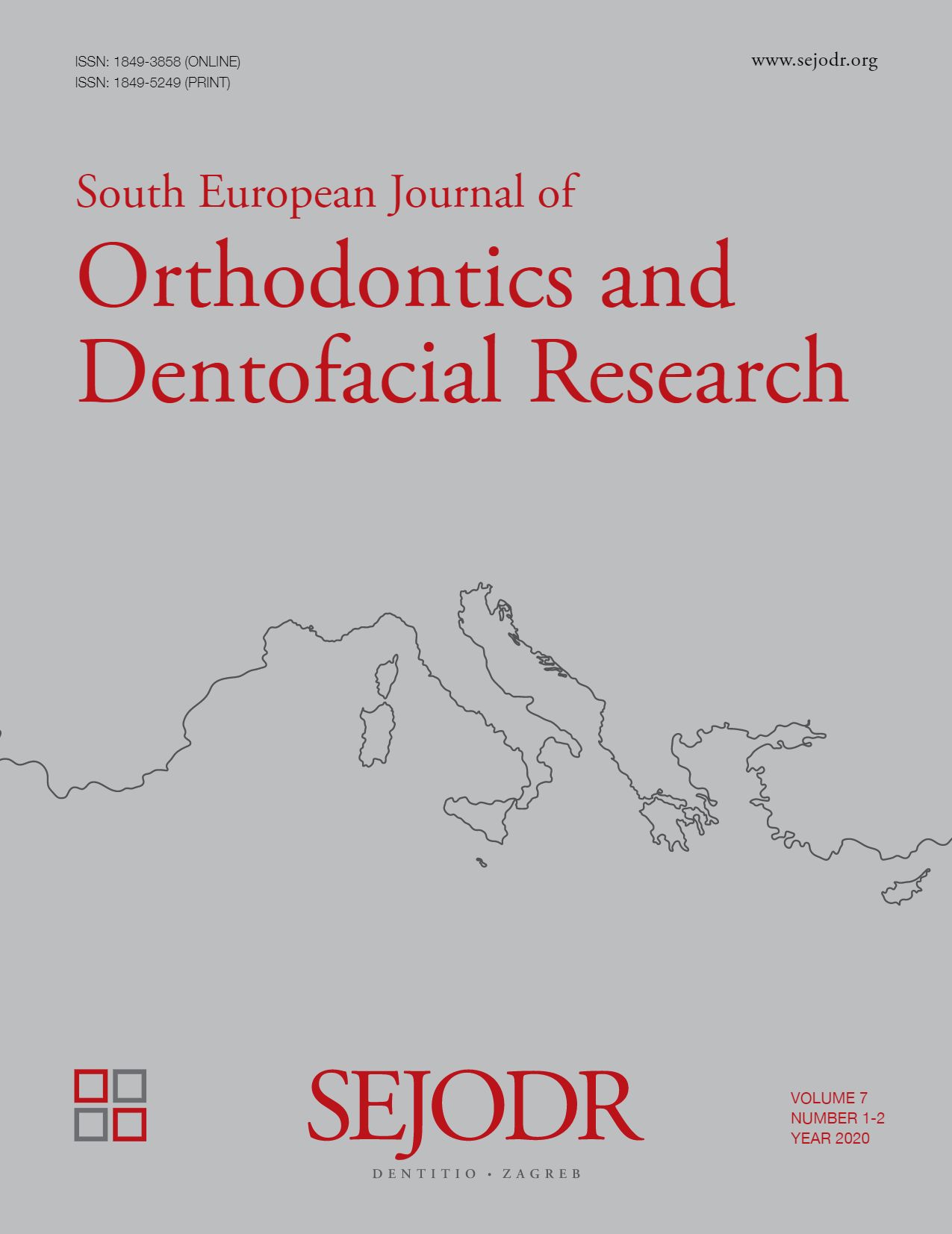RETENTION OF MINI SCREWS IN ORTHODONTICS – A COMPARATIVE IN VITRO STUDY ON THE VARIABLES
RETENTION OF MINISCREWS
Abstract
Objectives: To correlate between the different lengths, angles of insertion and the
mini-implant material and find out the most retentive combination.
Materials and methods: 48 mini-implants (24 Titanium and 24 stainless steel) of lengths 6mm, 8mm and 1.5 mm diameter were inserted into humerus bone of goat at two different angulations, 600 and 900. To insert the mini-implant in the respective angulations, custom made template was made and the angles were confirmed with digital radiographs. Force was applied on to the mini-implants with a universal testing machine and the compressive load to failure was measured.
Results: Results revealed that stability of the implant was positively correlating with the length of implant. A perpendicular angulation produced more stability. Moreover, titanium mini-implants had more resistance to compressive load than stainless steel mini-implants.
Conclusion: Length of mini-implant, its angulation in the bone and the material of mini-implant were factors affecting its stability. In this study, titanium mini-implant of 8mm length angulated at 900 were stable than their counterparts.
References
Singh K, Kumar D, Jaiswal RK, Bansal A. Temporary anchorage devices—mini-implants. Natl J Maxillofac Surg 2010;1:30-4.
Baumgaertel S, B. Hans. Buccal cortical bone thickness for mini-implant placement. Am J Orthod Dentofacial Orthop. 2009;136:230–235.
Park HS, Jeong SH, Kwon OW. Factors affecting the clinical success of screw implants used as orthodontic anchorage. American Journal of Orthodontics and Dentofacial Orthopedics. 2006;130(1), 18–25.
Petrey JS, Saunders MM, Kluemper GT, Cunningham LL, Beeman CS. Temporary anchorage device insertion variables: effects on retention. Angle Orthod. 2010;80:446– 453.
Huja SS, Litsky AS, Beck FM, Johnson KA, Larsen PE. Pull-out strength of monocortical screws placed in the maxillae and mandibles of dogs. Am J Orthod Dentofacial Orthop. 2005;127:307e13.
Park HS, Lee YJ, Jeong SH, Kwon TG. Density of the alveolar and basal bones of the maxilla and the mandible. Am J Orthod Dentofacial Orthop 2008;133:30-7.
Yu Jian-Hong, Lin YS, Chang, WJ Chang, Yau-Zen, Lin CL. Mechanical Effects of Micro-thread Orthodontic Mini-screw Design on Artificial Cortical Bone. Journal of Medical and Biological Engineering. 2012;34;49-55.
Deguchi T, Nasu M, Murakami K, Yabuuchi T, Kamioka H, Takano-Yamamoto T. Quantitative evaluation of cortical bone thickness with computed tomographic scanning for orthodontic implants. Am J Orthod Dentofacial Orthop. 2006;129;6: 721.e7–721.e12.
Pan CY, Chou ST, Tseng YC, Yang YH, Wu CY, Lan TH, Liu PH, Chang HP. Influence of different implant materials on the primary stability of orthodontic mini-implants. Kaohsiung J Med Sci. 2012;28:673–678.
Ashith M. V, Shetty B. K, Shekatkar Y, Mangal U, Mithun K. Assessment of Immediate Loading with Mini-Implant Anchorage in Critical Anchorage Cases Between Stainless Steel Versus Titanium Miniscrew Implants: A Controlled Clinical Trial. Biomed Pharmacol J. 2018;11(2).
Bollero P, Di Fazio V, Pavoni C, Cordaro M, Cozza P, Lione R. Titanium alloy vs. stainless steel miniscrews:an in vivo split-mouth study. Eur Rev Med Pharmacol Sci. 2018; 22: 2191-2198.
Brown RN, Sexton BE, Chu TMG, Katona TR, Stewart KT, Kyung HM, et al. Comparison of stainless steel and titanium alloy orthodontic miniscrew implants: a mechanical and histologic analysis. Am J Orthod Dentofac Orthop. 2014;145:496–505.
A. Omar, M.I. Ishak, M.N. Harun, E. Sulaiman, N.H.A. Kasim, AMM. Effects of different angulation placement of mini-implant in orthodontic. 2012;121, 1214-1219.
Lee J, Kim JY, Choi YJ, Kim KH, Chung CJ. Effects of placement angle and direction of orthopedic force application on the stability of orthodontic miniscrews. Angle Orthod. 2012;83: 667e73.
Wilmes B, Drescher D. Impact of insertion depth and predrilling diameter on primary stability of orthodontic mini-implants. Angle Orthod. 2009;79:609–614.
Maya RR, Pinzan Vercelino CR, Gurgel JA. Effect of vertical placement angle on the insertion torque of mini implants in human alveolar bone. Dental Press J Orthod. 2017;21:47 52.
Kim YK, Kim YJ, Yun PY, Kim JW. The effects of the taper shape, dual-thread and length on the mechanical properties of mini-implant. Angle Orthod. 2009;79:908–914.
Mohammed HI, Sheakli HA. Comparing the Primary Stability of Three Different Orthodontic Mini-Implants with Various Dimensions on Artificial Bone. 2018.
Chatzigianni A, Keilig L, Reimann S, Eliades T, Bourauel C. Effect of mini-implant length and diameter on primary stability under loading with two force levels. Eur J Orthod. 2010;33:381-7.
Singh AK, Kannan S, Arora N, Bajaj Y, Revankar AV. Measurement of primary stability of mini implants using resonance frequency analysis. APOS Trends Orthod. 2018;8:139-45.
Al-Ohali H (2017). Factors Effecting Primary Stability of Mini-implants in Vitro. 1st edition, British Columbia, Vancouver. 2017: Pp: 2-18.
The Creative Commons Attribution License cc-by-nc-nd formalizes these and other terms and conditions of publishing articles.
Copyright on any open access article in a SEJODR journal published by Dentitio d.o.o. is retained by the author(s).
Authors grant Dentitio d.o.o. a license to publish the article and identify itself as the original publisher.
Authors also grant any third party the right to use the article freely as long as its integrity is maintained and its original authors, citation details and publisher are identified.
The Creative Commons Attribution License cc-by-nc-nd formalizes these and other terms and conditions of publishing articles.

